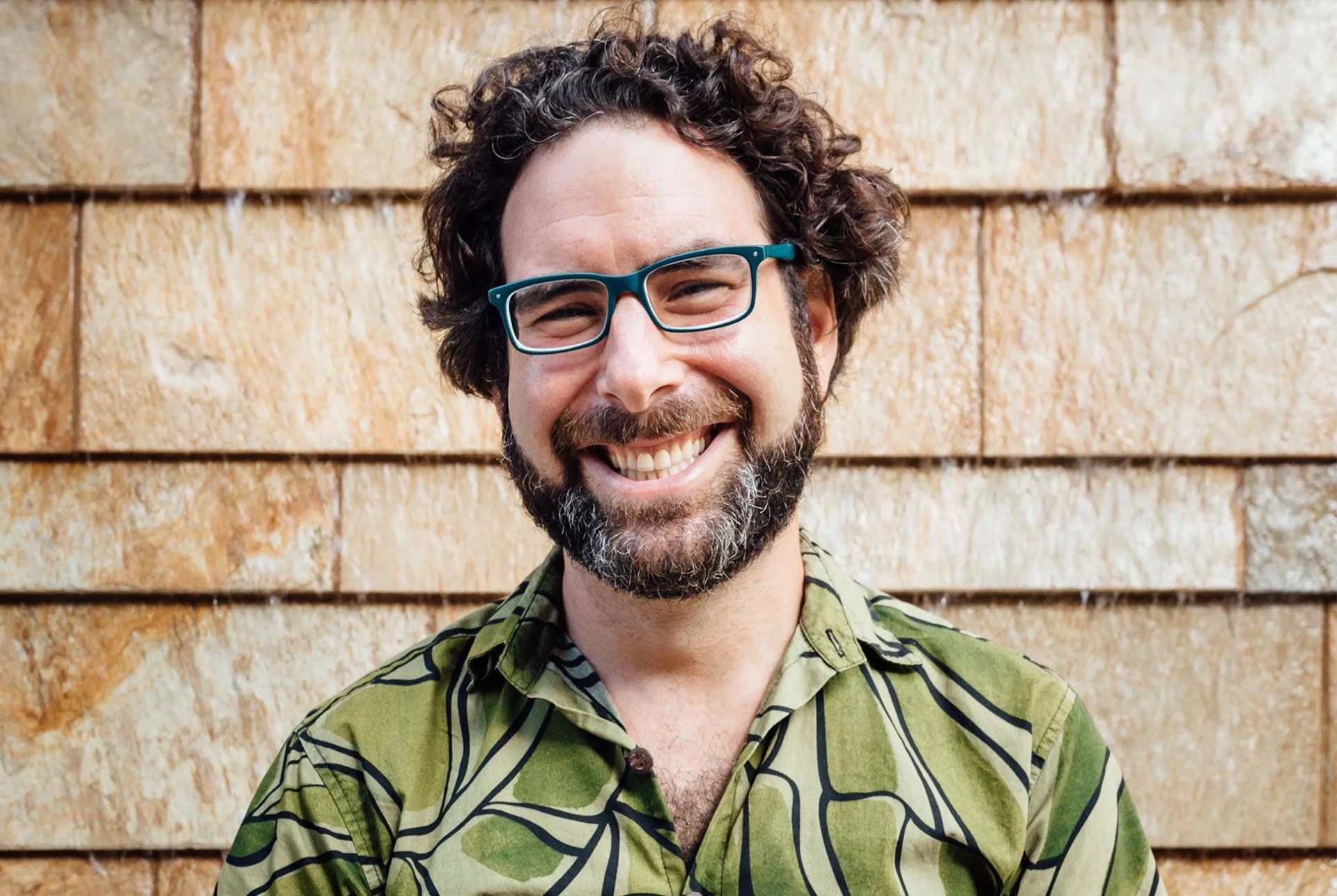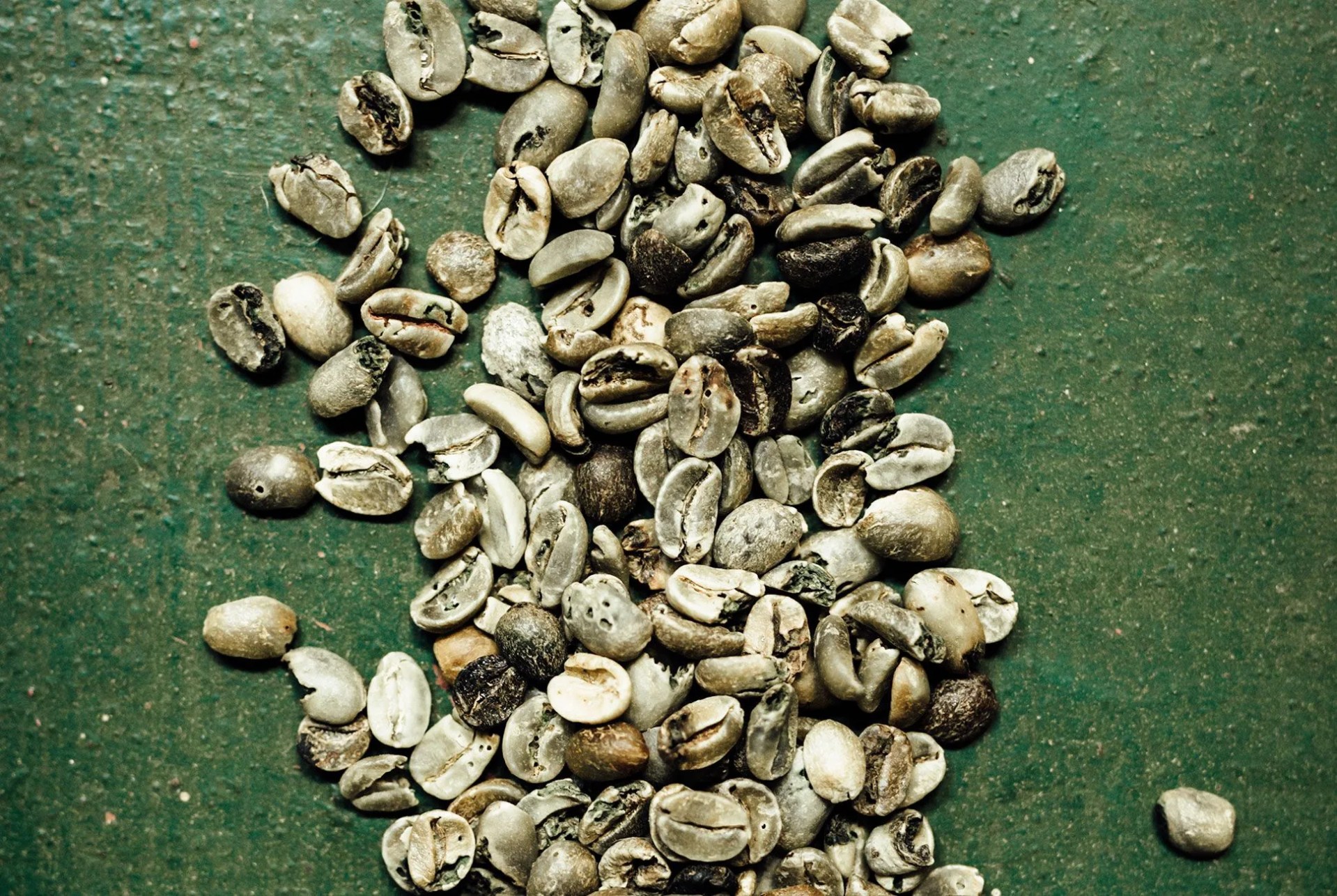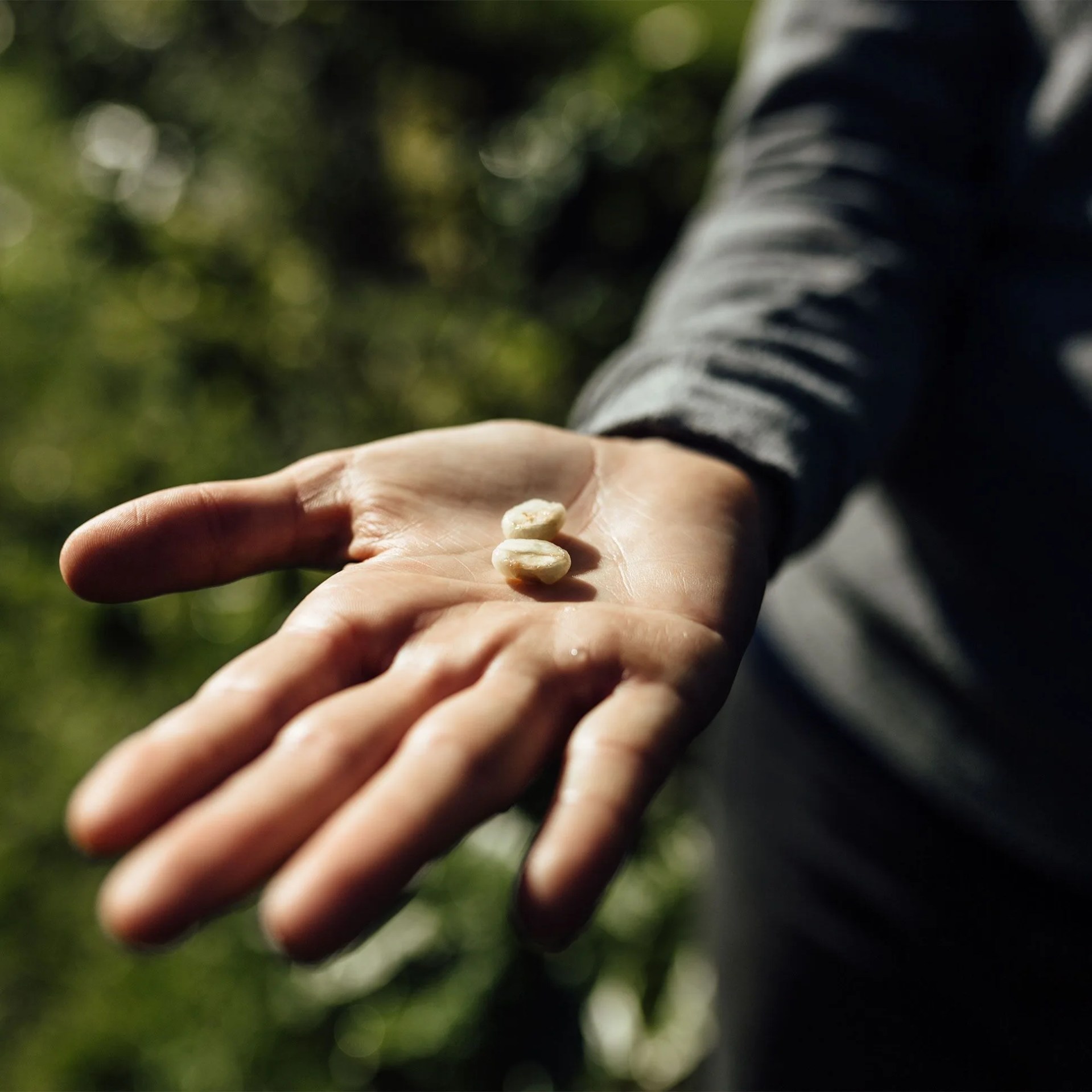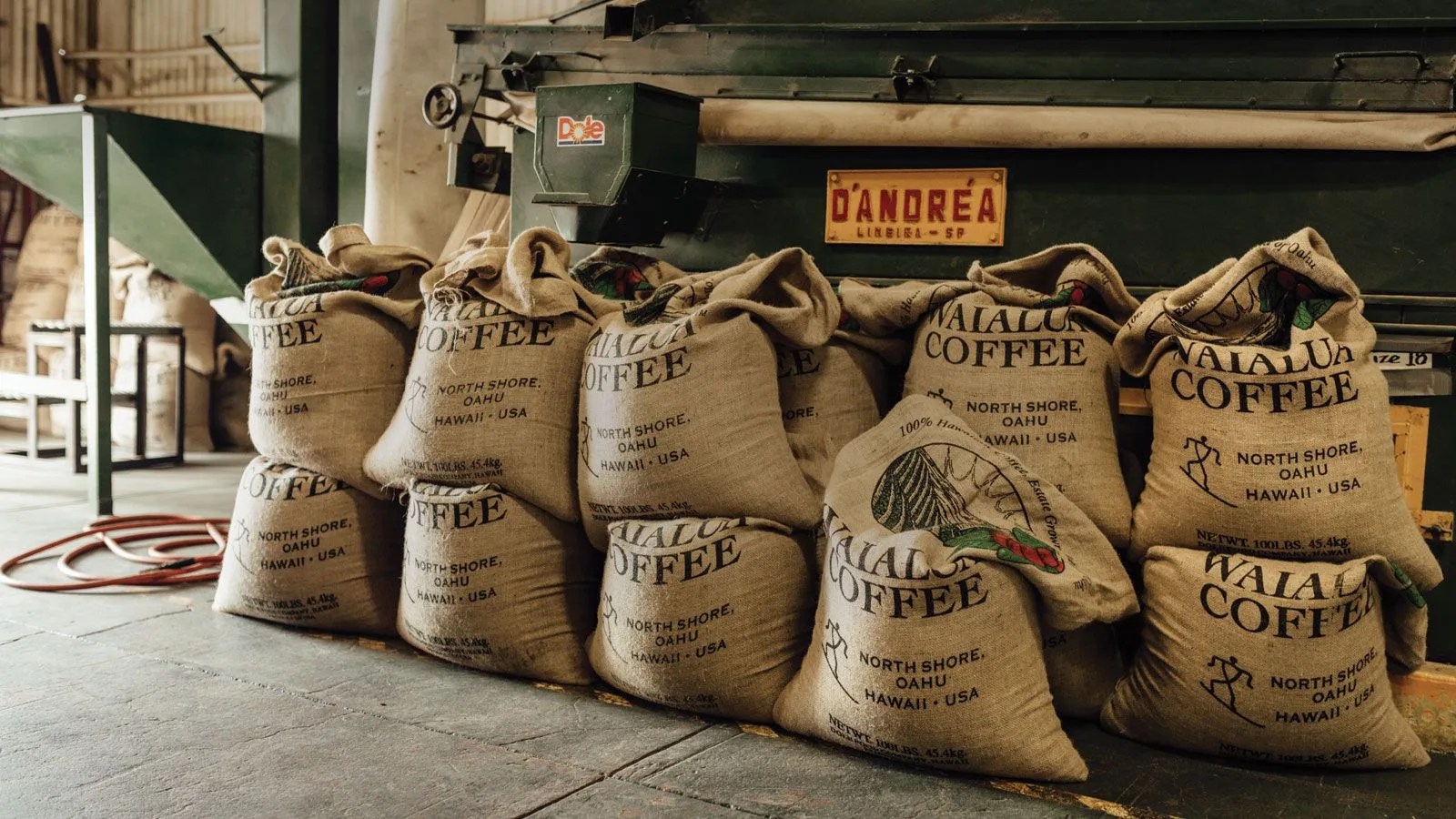From Issue Four of Gear Patrol Magazine.
Discounted domestic shipping + 15% off in the GP store for new subscribers.
Hawaii is the only U.S. state growing coffee on a commercial scale. Yet Hawaiian coffee is not a common sight in specialty coffee shops on the mainland. If you ask Hawaii-based coffee expert Shawn Steiman, he’ll give you a candid explanation as to why.
“We do grow some amazing coffees here,” he said sipping a cup of coffee in downtown Honolulu. “Not all of it is great. Farmers in Hawaii think it’s specialty coffee because it’s so expensive, but a lot of our coffees just aren’t very good.”
Coffee was first brought to the Kona region of the Big Island in 1813; by the late 1800s, merchant Henry Nicholas Greenwell had established the region as an internationally recognized brand. Until the 1970s, coffee grown in the Kona region was better, by far, than what anybody else was producing, according to Juli Burden, a coffee researcher at the Hawaiian Agriculture Research Center (HARC) on Oahu. “Japanese farmers that immigrated here paid attention to detail. They had access to clean water, had a lot of facilities you don’t get in other places in the world . . . it was the right place, right time, with the right ethos as to how they handled the coffee.”
Then the world caught up. Beginning in the ’70s and ’80s, attitudes towards coffee quality began to shift with the rise of “third wave coffee,” Starbucks, and institutions like the Specialty Coffee Association of America. Though this interest in quality coffee led to a rise in commercial success for Kona, as farmers and producers worldwide tried to brew a better cup, some Kona producers became content with cashing in on the region’s brand name.
“Kona had the whole game to itself for about ninety years, so it developed a reputation. That’s all that was promoted,” said Steiman. “There’s nothing inherently magical or special about it, it’s just a place. Just because a crop is growing in Kona doesn’t mean it’s going to have a certain taste characteristic.”
That nominal cachet has many Kona farmers producing for two lucrative markets: tourists and coffee blenders. According to coffee consultant and roaster R. Miguel Meza, approximately 30 percent of Kona coffee stays on the islands to be consumed by tourists. Further, Meza says that more than half of Kona beans grown are sold to be used in Kona blends, in which only 10 percent of the beans used actually come from Kona.

“Do you taste the ten percent that’s Kona? No. It’s really going to be the other ninety percent that affects the customer’s perception of the coffee more than the Kona itself,” said Meza. “But if you eliminate [blends] you no longer have a industry of eight hundred growers. The market can’t support that many growers just selling one hundred percent [Kona coffee].”
Kona only became the state’s primary coffee-growing region by default, as sugarcane (traditionally Hawaii’s cash crop) couldn’t grow on its hilly volcanic landscape. But during the ’80s and ’90s the sugarcane industry fell into decline. As more and more plantations across the Hawaiian islands shut down, coffee became an appealing alternative. Production spread beyond the Kona region, and the coffee crop skyrocketed. In 1990, the Hawaiian islands produced approximately 2.8 million pounds of coffee. By 1999 that number peaked at 10 million pounds statewide. In 2016, production hovered around 7.8 million pounds.
Still, the state of Hawaii only produces roughly 0.04 percent of the world’s coffee supply. That’s why Hawaiian coffees aren’t a common sight on the mainland, but there’s another good reason: growing coffee in Hawaii is astoundingly expensive. The average price for green (unroasted) coffee beans is around $1.50 per pound. For Hawaii specifically, it’s over $10.
Growing coffee in Hawaii is astoundingly expensive. The average price for green (unroasted) coffee beans is around $1.50 per pound. In Hawaii, it’s over $10.
“Our coffees aren’t expensive because we’re selling you the romance; they’re expensive for very legitimate reasons,” said Steiman. Labor is the biggest cost of growing coffee in Hawaii by far, especially in regions like Kona, where hilly landscapes make mechanized harvesting impossible. According to one study by the University of Hawaii at Manoa, labor makes up almost 40 percent of a farm’s operating costs. In the coffee industry, pickers are paid by the pound, but while a coffee picker in, say, Guatemala makes around $3 a day for picking 100 pounds of coffee berries, pickers in Hawaii are guaranteed to, at the very least, make minimum wage — currently $9.25 an hour in Hawaii.
“These guys are Americans. They don’t live in shacks; they have cars and cellphones and health insurance, and they want to live like Americans — of course it’s going to be expensive,” Steiman said.
Exacerbating things is a pest the size of a pinhead: the coffee borer beetle (CBB), first discovered on the Big Island in 2010. Every other major coffee-growing region in the world has been infested with CBB for some time, but Hawaii’s isolation protected it for years. When it hit, it hit hard. Some farms reported yield losses up to 35 percent, causing prices to increase even further. “I’ve been in agriculture forty-two years, and this is the worst bug I’ve ever come across,” said Michael Conway, farm manager at Waialua Estate, Oahu’s only large commercial coffee farm. As of writing, Kauai is the only coffee-growing island in the archipelago to remain uninfested.

The key to keeping CBB at bay is sanitation: cleaning up leftover berries dropped on the ground or in trees, which is easier said than done. For example, in Kona, the density of growers means neighbors — some who are hobbyists or have wild coffee plants – may not be as diligent. For Conway, whose 200 acres of coffee are harvested mechanically, berries are bound to be left behind. Farms also spray beauveria, a natural fungus (in lieu of chemicals) that, while effective, is expensive.
As prices go up, Hawaiian coffee gets harder and harder for buyers and roasters on the mainland to justify. As Jonathan Withers, a green-coffee buyer for Toby’s Estate Coffee Roasters in New York, explains: “It’s an extremely poor value-to-price ratio for speciality buyers. We use a hundred-point scale in coffee, but specialty is really only concerned with eighty-point coffee, the minimum to qualify, and ninety points. Coffees above that are tremendously rare, and are really only the most successful experiments, rarest cultivars, et cetera. For the price of a relatively rare eighty-four-point Hawaiian coffee, a solid score for a coffee to be blended, you might find hundreds of Colombia coffees at large availability cupping at an eighty-seven.”
That isn’t to say Hawaii can’t produce truly exceptional coffee. In 2008, while working for Kona coffee producer Hula Daddy, Meza helped create Kona Sweet, a coffee that scored a 97 from Coffee Review, the highest score the guide has ever given. In 2012, renowned coffee roaster Blue Bottle started carrying coffee from Rusty’s Hawaiian in Pahala. In 2013, Brandon Von Damitz and Kelleigh Stewart, the husband-and-wife team behind Puna-based Big Island Coffee Roasters, won a statewide coffee cupping contest with a variety called Pink Bourbon.
A hybrid of Red and Yellow Bourbon, Pink Bourbon is just one of many cultivars the researchers at HARC have been growing, with the intention of providing Hawaiian farmers with a high-quality (read: more marketable) cup and a disease-resistant crop. The majority of coffee grown in the state of Hawaii, particularly in Kona, is Kona Typica, a variety originally brought over from Guatemala decades ago.
Kona Typica has yielded some great results, especially those in Kona, but as Burden notes, HARC’s special cultivars show promise for farmers in other regions of the Hawaiian islands who want to produce specialty coffee. They’d also be more resistant to hemileia vastatrix (coffee rust), which shows up as yellow spotting on the coffee tree’s leaves, hindering photosynthesis and ruining a plant’s coffee fruit productivity. While rust hasn’t reached Hawaii yet, Burden believes that if it does — or rather, when it does — “We will have a very serious crisis” for Hawaii’s third most valuable agricultural product.
HARC’s research also shows that growing coffee in the shade of koa trees, a species endemic to Hawaii, could be beneficial for specialty growers. As a nitrogen-fixer, it could reduce the cost of fertilizer (another huge expense for Hawaiian coffee farmers), while promoting the islands’ biodiversity. There’s also been some evidence to show that, theoretically, the koa tree keeps the coffee plants cool enough to increase cupping quality.
There’s one other positive benefit to koa trees: They can earn farmers thousands of dollars down the road. Koa is relatively fast-growing, taking about 20 years to fully mature. It can be harvested and sold as lumber, subsidizing a farmer’s labor costs in the long run. Koa is particularly valuable for use in premium furniture and instruments – for example, Taylor Guitars pays as much as $300,000 for a single tree. “I don’t know why more coffee farmers aren’t planting it,” said Burden.

“Most farmers tend to learn by watching other people,” said Damitz, who in 2010 moved from Portland, Oregon, to Puna. “Tradition is tradition, and it takes a long time to move out of that. This whole idea of specialty coffee and experimenting in the field with different varietals and processing methods is still a relatively new concept to people.”
When Damitz and his wife, Kelleigh Stewart, first moved to the Big Island, they knew almost nothing about growing coffee. They learned modern methods though Google searches and YouTube videos. As newcomers they were initially met with pushback from local farmers, but Damitz and Stewart have become somewhat ingrained in Hawaii’s coffee community; today, they’re considered a great resource by several other growers. In 2013 Big Island Coffee Roasters won a USDA grant to purchase a grading machine. For the first year they had it, they offered it to neighboring farms to use free of charge.
Stewart is now a board member at the Hawaiian Coffee Association, an industry trade group for some 90 dues-paying coffee producers that she says is in a transitionary period, trying to refocus on helping educate members on better farming and processing practices. “We have some work to do with the quality of our coffees, the way that we communicate with our members, educating farmers and presenting ourselves as an organization for baristas and roasters,” she said.
So, is specialty growing the way for Hawaiian coffee to evolve? For some growers, yes. But it may only ever be just a small fraction of the industry.
“I do feel like more farmers than ever before have a personal interest in producing geeky coffee,” said Steiman. “But the industry will continue to exist so long as people with money continue to buy farms — I don’t think it will make a difference if the coffee is geeky or not. What will make the biggest difference will be a modest increase in the number of farmers getting geeky and the storytelling of those coffees by local roasters and baristas. Farmers can’t do it alone.”

